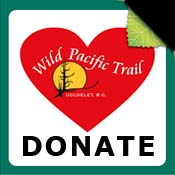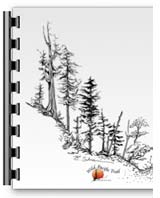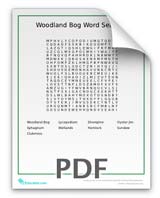


Join free events listed on our calendar (click to download a prinable PDF file) or visit us at Amphitrite House Interpretive Centre any day of the week.
Interpretive Walk Info: See the map at the bottom of this text for colour coded locations. Our trail naturalist and guest speakers have a wealth of knowledge and experience to share. Have questions about stewardship?
Need trail orientation?
Get tips on how to learn and see more from our enthusiastic Naturalists.

![]() Treasures of the Tide Big Beach Walk: meet at the Big Beach Picnic Area Shelter
Treasures of the Tide Big Beach Walk: meet at the Big Beach Picnic Area Shelter
FRIDAYS | 10:00 am – 11:00 am
Location: Big Beach, Ucluelet
Step into the dynamic world where land meets sea.
Join us for a one-hour guided walk along the shoreline at Big Beach (Matterson and Marine Drive).
This family-friendly program welcomes all ages.
Winter storms bring new treasures ashore each day — freshly washed seaweeds, shells, driftwood, and other signs of ocean life. Learn how these materials tell the story of the coastal ecosystem. You may find long ribbons of bull kelp, one of the fastest-growing seaweeds on Earth, growing up to 30 feet deep here. Bull kelp forests are vital marine habitats, providing shelter and food for fish, sea stars, and crabs.
Along the trail, notice the salal bushes that fringe the shoreline — hardy coastal plants with waxy leaves that help them withstand salt spray and wind.
Discover how wind, waves, and wildlife shape this ever-changing shoreline — and why storm season is one of the most exciting times to explore.
Photo: @therunawaybrunette
Meet at the Big Beach picnic shelter at 10:00 am. If you arrive late find us on the beach.
This adventure happens rain or shine, and no registration is required. Participation is free or by donation.

Saturdays | 2:00 pm – 4:00 pm Starting November 2nd
Location: Amphitrite House Interpretive Centre, Ucluelet
Join us for hands-on, nature-themed activities that change weekly.
Colouring and puzzles too.
Learn how flora and fauna thrive on our wild coast.
This event will be indoors in the house overlooking the lighthouse, end of Coast Guard Road.
Participation is free. Donations fund all programs and the educational displays at Amphitrite House Interpretive Centre.
Contributions can also be made for materials used in crafts, experiments and souvenirs.

 Naturalists staff this Educational Centre daily year round.
Naturalists staff this Educational Centre daily year round.
Open Daily | 9:00 am – 4:00 pm | Free by donation | All Ages Welcome
Daily Interpretive topics can be explored from our new Interpretive Centre overlooking the iconic Amphitrite Lighthouse. Learn about the Wild Pacific Trail, Ucluelet, and the array of eco-systems on the Pacific Rim. Ask about our walking trees and other unique features of rainforest, bog, intertidal or wetland ecosystems see along the Wild Pacific Trail. Birds and other wildlife abound here on the West Coast, hear about what has been seen recently.
Step inside and discover the wonders of the Wild Pacific! Our interpretive centre is open to all ages for drop-in exploration, where you can learn about local marine life, coastal ecosystems, and Ucluelet’s natural history.
Monday–Friday: Hosted by the Raincoast Education Society
Saturday–Sunday: Hosted by Wild Pacific Trail Society
Bring your curiosity—and your nature questions! Our friendly naturalists are here to share stories, point out fascinating wildlife, and help you connect with the incredible biodiversity of our region. No registration required; come anytime between 9:00 am and 4:00 pm. Souvenir items are for sale.
Storm Watching from the shelter of Amphitrite House is a new attraction.
Calendar events are colour coded to the parking lots at the Whale Parking Lot (red), Lighthouse (teal), Big Beach aka Frog parking lot (blue) and Ancient Cedars trailhead (green).


Location: Choose any location on the Wild Pacific Trail
Teachers, tourism providers, or anyone looking for a personal experience with nature – enjoy a private guided walk tailored just for you or your group!
Advance booking available by suggested donation.
email naturalist@wildpacifictrail.com to inquire.
We are grateful to program experts such the Ucluelet Aquarium the Raincoast Education Society, Pacific Rim National Park Reserve, WildSafeBC.com, and Redd FIsh Restoration Society for their expertise.
The trail and events could not exist without the support of the District of Ucluelet. Special Guest speakers enrich our programs, stay tuned.
Follow us on Facebook and Instagram for interpretive postings and weather being observed.
Award winning videos below are a great insight into our programs.
The Wild Pacific Trail is a unique outdoor classroom that offers incredible opportunities to connect people to nature.
Amphitrite House Interpretive Centre and our seasonal Discovery Tent at the lighthouse offers revolving topics for all ages.
Seven entertaining and award winning videos can be a great preview of what there is to see and learn.
Episode 1: "What's that smell?" video with our Wild Pacific Trail Naturalist
Special thanks to Special thanks to Vi Mundy of Yuułuʔiłʔatḥ First Nation for her guidance.
Video series by Arya Touserkani @tousquared www.waterlogue.ca
Episode 2: " Follow that Slime" -- We have a lot to learn from Nature, we just need to listen!
Special thanks to Yuułuʔiłʔatḥ community, Elder Vi Mundy and Gisele Martin of Tla-o-qui-aht First Nation for their traditional teachings.
Narrated by Tanya Nestoruk, trail naturalist, video by Arya Touserkani.
Episode 3: "For Peat's Sake" -- explore with our Wild Pacific Trail Naturalist!
Follow our naturalist as she discovers the weird and wonderful species that thrive in a Woodland Bog. Warning, you could get lost.
Follow this link for a COLOURING BOOKLET or a fun WORD PUZZLE.
 |
 |
|---|
Special thanks to Special thanks to Vi Mundy of Yuułuʔiłʔatḥ First Nation. Video by Arya Touserkani.

Episode 4: "Force of Nature" will sweep you off your feet.
Explore the unique WEATHER that comes with living on the coast, how species not only manage to survive, but THRIVE!
Fun fact: Can you name an amphibian that has no lungs?
We are proud to acknowledge the skills of our naturalist Tanya Nestoruk for her work with videographer Arya Touserkani www.waterlogue.ca
in achieving an award of excellence from Interpretation Canada for the video above.
Special thanks to Vi Mundy of Yuułuʔiłʔatḥ First Nation and Dr. Barb Beasley with the Association of Wetland Stewards for Clayoquot and Barkley Sound.
Episode 5: "Remarkable Ravens" a story of the smartest bird in the rainforest
Raven’s are not only role models of communication, fair trade, and savvy intelligence, they play an essential role as ecosystem recyclers.
Challenge: how can you tell the difference between a raven and a crow?
Thank you to Parks Canada for support for this project. Special thank you for footage and raven sound clips copyright by Ian Cruickshank
Note: footage was taken with a telephoto lens to avoid disturbing wildlife. Raven vs Crow Image by Rosemary Mosco and Dr. Kaeli Swift with BirdandMoon.com @corvidresearch
Special thanks to Vi Mundy of Yuułuʔiłʔatḥ First Nation for Nuu-chah-nulth translations.
Additional footage courtesy of:
https://www.youtube.com/watch?v=pHHHAfzAuKc
https://www.youtube.com/watch?v=gEksZdWKqtA – https://www.youtube.com/watch?v=U6K9LbRX15Y
https://www.youtube.com/watch?v=nJdj-2XvGF4 – https://www.youtube.com/watch?v=g6vzGrWP9lc
Also thanks to the Clayoquot BIosphere Trust for funding.
Video production by Arya Touserkani.
Episode 6: "Tree-S-I: Murder by Mushroom" help us solve this mystery.
There’s been a murder in the forest! Who! What? Why!
Follow along as detective Tanya gets to the root of the crime by investigating clues and searching for suspects in the woods… will she discover whodunit in this intriguing case?!
Special thanks to the inspirational Gisele Martin of the Tla-o-qui-aht First Nation for sharing her timeless knowledge of Nuu-chah-nulth language and culture.
So Mush-thanks to Andy MacKinnon, forest ecologist extraordinaire, for sharing his vast scope of marvelous mushroom knowledge and delightful sense of humour.
Stop motion animation on tree communication by Local Ucluelet youth, Riley Gerbrandt. Thank you!
Fun fact: what is our planet's largest organism?
Special thanks to the Clayoquot BIosphere Trust for funding. Video by Arya Touserkani.
Episode 7: hašaḥma quuquuʔaca ( language is precious & valuable )
Join special guests Jeneva Touchie and Gisele Martin as they share their personal connections to the Wild Pacific Trail and the importance of Nuu-chah-nulth language.
What wisdom can we learn from ancient languages?
To learn more about the Nuu-chah-nulth language visit:
https://www.firstvoices.com/explore/FV/sections/Data/Nuu-chah-nulth/Nuu%C4%8Daan%CC%93u%C9%AB/Nuu-chah-nulth%20(Barkley)
Jeneva offers free Nuu-chah-nulth language classes Tuesday evenings over Zoom. To find out more please email touchie_jeneva@hotmail.com
To learn more about Nuu-chah-nulth history, culture, news and events please go to https://nuuchahnulth.org/
We are grateful to our special guests and Sam Touchie from Yuułuʔiłʔatḥ First Nation for inspiring this episode.
Project funded by the WIld Pacific Trail Society and the Clayoquot BIosphere Trust.
Video by Arya Touserkani @tousquared www.waterlogue.ca
Send us your questions, or post photos and ideas on Instagram or email naturalist@wildpacifictrail.com.
We will post answers to the best questions. Let us know what you would like to learn!